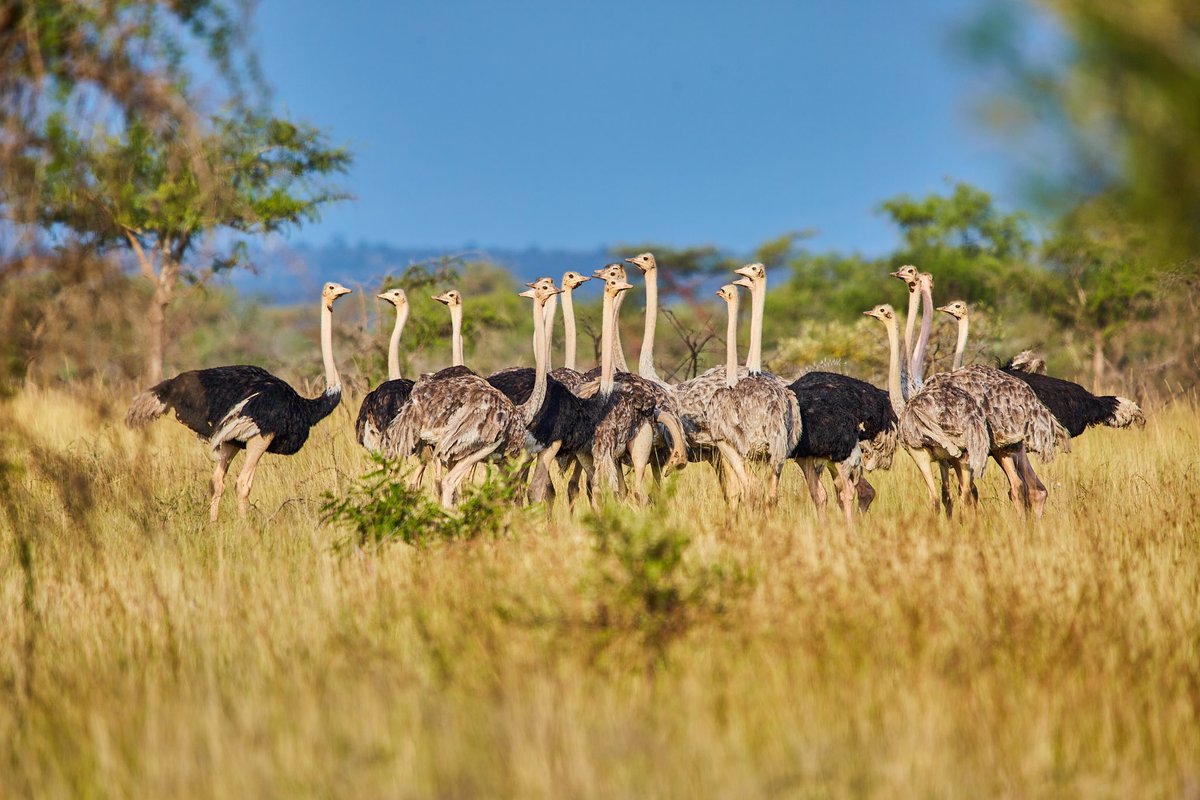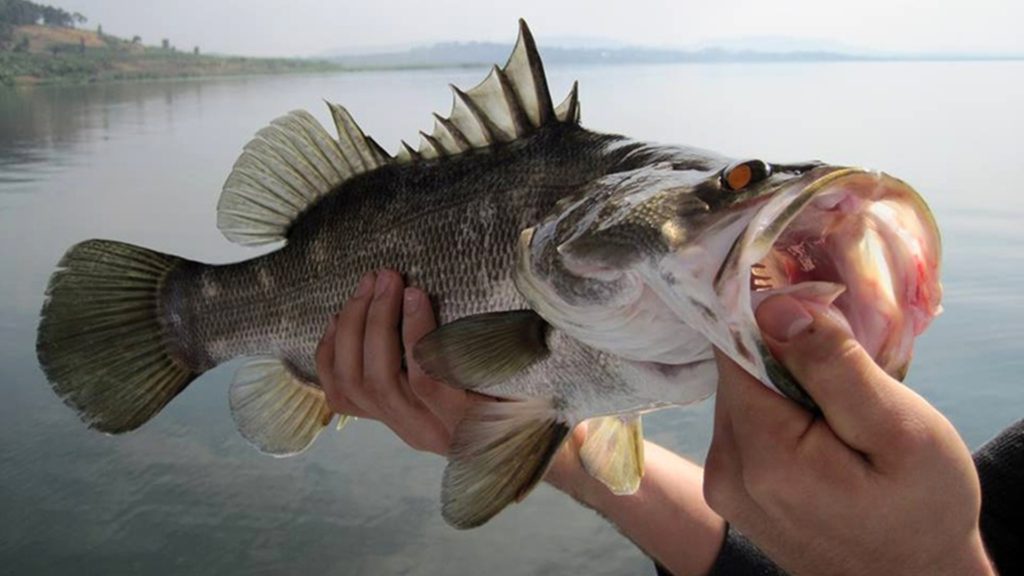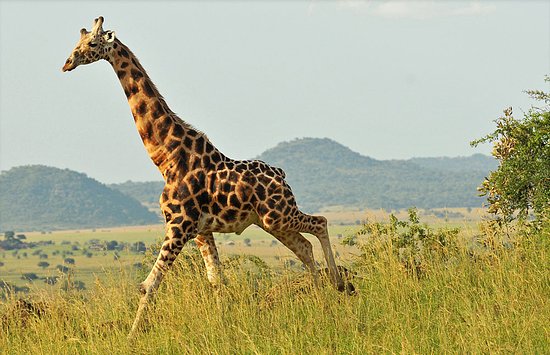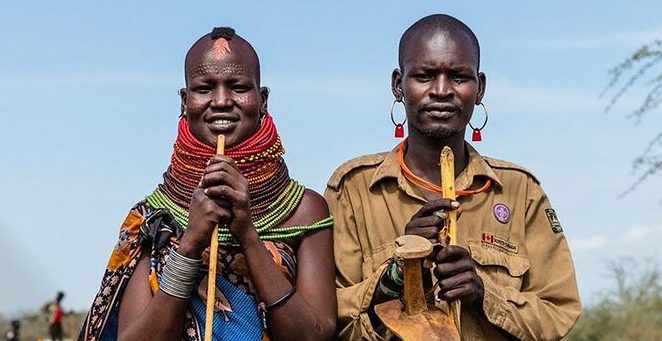Attractions Near Sipi Falls
Sipi Falls is located in the Kapchorwa district of eastern Uganda, along one of the slopes of Mount Elgon, and is approximately 277 kilometres by road from Kampala, Uganda’s capital. It is surrounded by beautiful scenery and consists of three distinct waterfalls. The nearest large town to Sipi Falls is Mbale, which is about 55 kilometres from Kapchorwa and the largest in eastern Uganda. The majority of the people living in this area are Sebei, with a few bagisu. There are attractions near Sipi Falls, including:
Pian Upe.
The Pian Upe Reserve is located in the Nakapiripirit District of Uganda’s Karamoja Region in the country’s far northeast. Impalas, giraffes, plain zebras, and common elands are among the animals that roam the reserve. Ostriches are the most well-known and sought-after of the numerous bird species that inhabit Pain upe Game Reserve.
Pian Upe Wildlife Reserve in Uganda is widely regarded as one of the country’s best safari destinations. Although it is one of Uganda’s more recently discovered tourist destinations, it has retained much of its natural beauty and rawness. You’ll almost always have the entire game reserve to yourself, and the nearby mountains provide a stunning backdrop to the breathtaking countryside scenes. Pina Upe is Uganda’s second-largest protected area, after Murchison Falls National Park. It covers up to 3,893 km2. The Pian Upe wildlife reserve, located to the north of Mount Elgon, is managed by the Mountain Elgon Conservation Department and covers an area of approximately 2,275 square kilometres. As a result, the Mount Elgon Conversation Area now includes not only Pian Upe Wildlife Reserve, but also Matheninko Wildlife Reserve, Bokora Wildlife Reserve, and Mount Elgon National Park, all of which are located in northeastern Uganda.
Pian Upe is located in the Nakapiripiti district of northeastern Uganda, and the game reserve borders the districts of Amudat, Moroto, Katakwi, Napak, Kween, Kumi, Bukedea, and Bulambuli. Travelling by car from Kampala, Uganda’s capital, to the game reserve takes approximately 8 to 9 hours via the Mbale to Soroti road, 4 to 5 hours from Mbale city, and 5 to 6 hours from Kidepo National Park. Nakapiripiti’s Pian Upe is conveniently located just south of the Chepsikunya trading centre and north of the Namalu trading centre for those travelling from Moroto city. Amudat airstrip is the nearest one that is still in use.

Prior to its designation as a conservation area, Pian Upe Wildlife Reserve was notorious for being a battleground between two Karamojong pastoral groups, the North-Eastern Ugandan Karamojong and the Kenyan Pokot, who raided each other during ruthless cattle rustling all the way up to Matheniko & Bokora Wildlife Reserve and into Kidepo Valley National Park. However, now that peace has returned and tourism has been introduced to benefit the locals, things are improving.
Murchison Falls National Park
Murchison Falls National Park (MFNP) is one of Uganda’s ten national safari parks, spanning the districts of Nwoya, Buliisa, Kiryandongo, and Masindi. Murchison Falls Park, located on the shores of Lake Albert, is part of the Murchison Falls Conservation Area, which also includes the Bugungu and Karuma wildlife reserves. Murchison Falls National Park is Uganda’s largest national park, covering an estimated 3,893 square kilometres. Murchison Falls National Park is conveniently located about 282 kilometres from Kampala and takes about 4-5 hours to drive there.
Best Activities in Murchison Falls National Park
Murchison Falls National Park is a popular safari destination in Uganda, but what can visitors do there? Here is a list of the top activities to do in Murchison Falls National Park.
Game Drives
With nearly 76 mammal species, the best way to see wildlife is to go on a game drive through the park. Game drives can be conducted in the morning or evening, depending on the itinerary. Game drives last about 2-4 hours and cover various tracks throughout the park. The Buligi game track, which stretches from the Victoria to the Albert Niles, is one of Murchison Falls’ best wildlife viewing spots. On a game drive, you will see a variety of wildlife, including elephants, leopards, giraffes, lions, buffaloes, and many more.
Birdwatching
Murchison Falls Park, Budongo Forest, and Kaniyo-Pabidi are must-see birding safari destinations in Uganda. There are approximately 450 bird species recorded in the park, with 360 known to be found in the Kaniyo-Pabidi forest. Several bird species can be found in the area, including the rare Shoebill Stork, weaver birds, malachite kingfishers, and many others. Birds that can be seen include the Blue-headed Coucal, Black-billed Barbet, Squacco Heron, African Quail-Finch, Sandpipers, Red-throated Bee-eater, Abyssinian Ground-Hornbill, Eastern Grey Plantain Eater, Grey Crowned Crane, and many others. Budongo Forest and the Royal Mile area are excellent bird-watching spots.
Boat Cruise
Amazing boat safari on the White Nile and hike to Murchison Falls in Uganda. The park is crossed by the Nile River, making it an excellent location for a boat cruise or launch trip. A boat cruise at Murchison Falls takes you to the base of the mighty falls, which depart from the jetty in Paraa. The banks of the Nile River at Murchison are teeming with aquatic animals such as crocodiles and hippos. A boat cruise to the bottom of the falls takes approximately 2 hours. Aside from organising a boat cruise to see wildlife and birds, you can also relax with a sundowner cruise on the Nile River. Private boat cruises can be organised for a small group of people to cruise the Nile.
Hike to Top Falls.
Hiking to the top of the falls is one of the most amazing activities at Murchison Falls National Park. The walk is short and not particularly strenuous. It lasts approximately one hour from the bottom of the falls. To hike to the top of the falls, you must first take a boat cruise to the bottom. Without the boat cruise, you can only see the top of the falls and not hike there. The hike to the top of the falls is breathtaking and the best way to capture stunning photographs of the world’s most powerful waterfalls.
Sport Fishing
Anglers who visit the park can enjoy excellent sportfishing opportunities on the Nile. Sportfishing at Murchison allows you to catch fish such as Nile Perch, catfish, tilapia, tigerfish, and electric catfish. Many world-class anglers have travelled to Murchison Falls in search of the biggest fish, and you could be one of them. It is recommended that seasoned anglers carry their own fishing equipment. The best time to fish is from mid-January to early April, when the water is low. Morning and late evening are the best times to go fishing.

Chimpanzee Tracking
Habituated chimpanzees can be tracked in the nearby Budongo forest during a Uganda chimpanzee tracking safari. About 800 chimps live here, providing a memorable chimp trekking experience. Uganda is the best chimp trekking spot.
Kidepo Valley National Park
Kidepo Valley National Park covers an area of approximately 1,442 square kilometres. km, supporting approximately 77 mammal species, 475 bird species, several reptiles, and flora. The Dik-Dik (smallest antelope), cheetahs, ostriches, and Karamoja Apalis are all unique to Kidepo Valley National Park. Kidepo Valley National Park is located in northeast Uganda’s Karamoja region and covers 1,442 square kilometres (557 square miles). Kidepo is a rugged savannah dominated by Mount Morungole at 2,750 meters (9,020 feet) and divided by the Kidepo and Narus rivers.
Kidepo Valley National Park is located near Karenga in Kaabong District, in Uganda’s northeastern corner. The park is about 220 kilometres (140 miles) northwest of Moroto, the sub-region’s largest town. It is about 520 kilometres (320 miles) northeast of Kampala, Uganda’s capital and largest city. The park’s northwestern boundary runs along the international border with Bira, South Sudan, and abuts the Kidepo Game Reserve
Things to Do at Kidepo Valley National Park
Narus Valley Game Drive.
The park’s only permanent water points are in the southerly Narus Valley, where wildlife congregates for much of the year. Look for buffalo and elephants in the valley’s swamps, giraffe and eland on the drier slopes above, and lions on the rock outcrops.
Apoka game drives are the most efficient way to cover a large area quickly in the park. It’s a once-in-a-lifetime chance to see predators and big cats up close and personal from the safety of your car.
Most drives in the Narus Valley, which is home to a diverse range of animals, follow one of two 20-kilometer loops. Even during the dry season, there is a small amount of water available, which attracts large herds of buffalo, thirsty elephants, and antelope. When herbivores congregate, predators are drawn in, resulting in the sighting of numerous stunning species.

During the hot and dry season, game drives leave in the early morning or late afternoon. The animals are most active at this time, and the lighting is ideal for photographing them.
Although there is less wildlife in the drier Kidepo Valley, you should still take the time to explore its breathtaking natural beauty. Keep your eyes peeled, but focus your attention on the Kanagorok hot springs, which are 30 kilometres north of Apoka. Take it easy as you wind through mountain-framed plains and the Kidepo River, which has a wide sand bed during the dry season. While the heavier bush provides cover for the kudu, this is an excellent habitat for secretary birds and ostriches.
Kidepo Valley Drive.
The dry Kidepo Valley is short on big game but long on scenery. 30 kilometres north of the park’s tourism hub at Apoka, the road crosses the dry, sandy bed of the Kidepo River to enter an expansive plain bordered to the east by the Morungule mountain range and to the north by the towering 2975-meter-high Jebel Lotuke in South Sudan. Mammals are uncommon in this area, but ostriches and secretary birds are frequently seen.
Nature Walks.
Guided walks range from short nature walks around Apoka Rest Camp to longer walks through the open grasslands of East Kakine, as well as a walk along part or all of the 15km Rionomoe Trail, which runs along the Narus Valley’s southern side. The Morungule range, which rises from the plains northeast of Apoka, can be visited on foot with a ranger guide.
Bird watching.
Apoka has experienced ranger guides who can help you locate and identify birds in the park’s various habitats.
Community walks.
Community walks outside the park allow visitors to learn about life in the local Karamojong manyattas (homesteads) of Kawalakol, Lorukul, and Karenga.
Karamajong
The Karamojong people, also known as the Nilotic ethnic group, are agro-pastoral herders who live primarily in northeastern Uganda. And their mother tongue, ngaKarimojong, is quite unique, and they belong to the Nilotic language family.
Historically, the Karamojong lived in the southern part of northeast Uganda, which covers one-tenth of the country. More specifically, these are the people who became part of a group that migrated from present-day Ethiopia around 1600 A.D. and was divided into two branches: the Kalenjin group and the Maasai cluster. Other branches are called Ateker, and they migrated westward.
Karamojong People and Their Culture
The Karamojong people are culturally known as herdsmen, moving their livestock to neighbouring districts for water and pasture.
However, due to a lack of food and water, Karamojong interacts with other ethnicities.
The Karamojong are indigenous residents of Kaabong, Kotido, Napak, Moroto, Abim, Amudat, and Nakapiripiriti districts in northeastern Uganda. They are descendants of Nyangatom from Ethiopia and nomadic pastoralists who migrated south around 1600 AD to find permanent grazing lands and water for their livestock. During the migration, the group was divided into two groups. One group migrated to Kenya on the shores of Lake Turkana, where they became known as Turkana. For that matter, the Turkan intermarried with earlier settlers in the area and their offspring, known as Maasai and Kalenjin.
The second group, known as the Jie and Toposa of Sudan, chose to settle in what is now South Sudan. Interestingly, the Karamojong are cousins of the Jie who chose to relocate further south into Uganda. The aforementioned groups share common activities such as keeping large herds of livestock, living a nomadic lifestyle, wearing traditional clothing, having body marks that represent a hidden message, and having customs and norms that are similar. The youth of Uganda’s Jie people continued to live a nomadic lifestyle, venturing further south in search of fresh pastures for their livestock and water. However, their parents became tired of the constant movement and chose to settle in their current regions.
The Jie youths have a slogan that says in their local language ”ekar imojong,” which means the old men are tired and can’t go any further. Furthermore, these youths began to intermarry with indigenous communities, producing the Itesots of Eastern Uganda. The Karamojong people speak Nga Karamojong, and their traditional culture is known as Nagi Karamojong.
However, the Karamojong are traditionalists who take great pride in their culture and customs. These people have unique traditions that attract foreign influence in areas such as education, travel, technology, fashion, medicine, housing, and religion. To some extent, they are jealous of their traditions, as we see the government intending to change their lifestyle through suspicion. However, it takes a lot of sensitisation to accept.
Despite this, traditional nomadic pastoralists roamed vast areas in search of fresh pastures and water for their livestock, which included goats, cattle, sheep, and chicken. The Karamojong people have a traditional belief to pray to Akuj, who they believe gave them the birthright to all cattle in the Karamoja region and beyond. Karamojong people’s traditional lives revolve around livestock, particularly cattle. Their staple diet consists of raw milk and blood obtained by puncturing a cow’s skin. They also eat smoked meat, cow ghee, smoked hides, yoghurt, and fresh beef.

The number of cows owned by a family represents its wealth, prestige, and social status. Cows are commonly given as gifts for good character, achievement, and friendship, as well as for valour and bravery in protecting the community. In Karamojong culture, boys receive cows at a young age to gradually increase their livestock.
Traditionally, the Karamojong organised warrior squads and cattle rustlers to raid neighbouring communities for cows while also protecting their own herds from raids by other communities.

